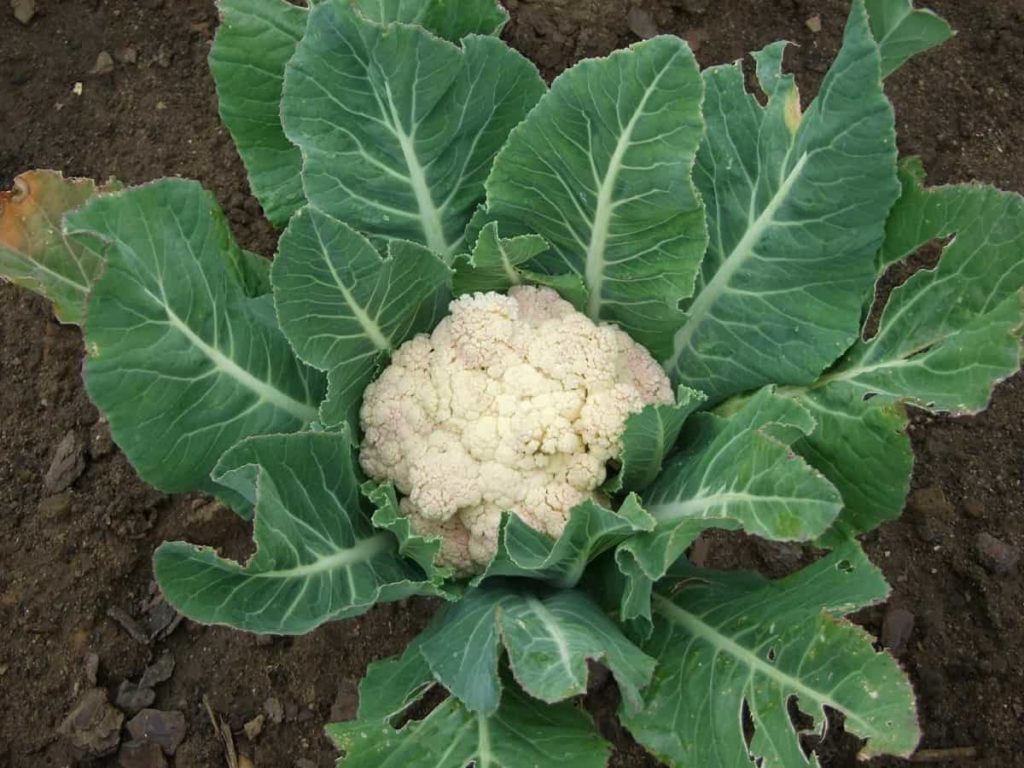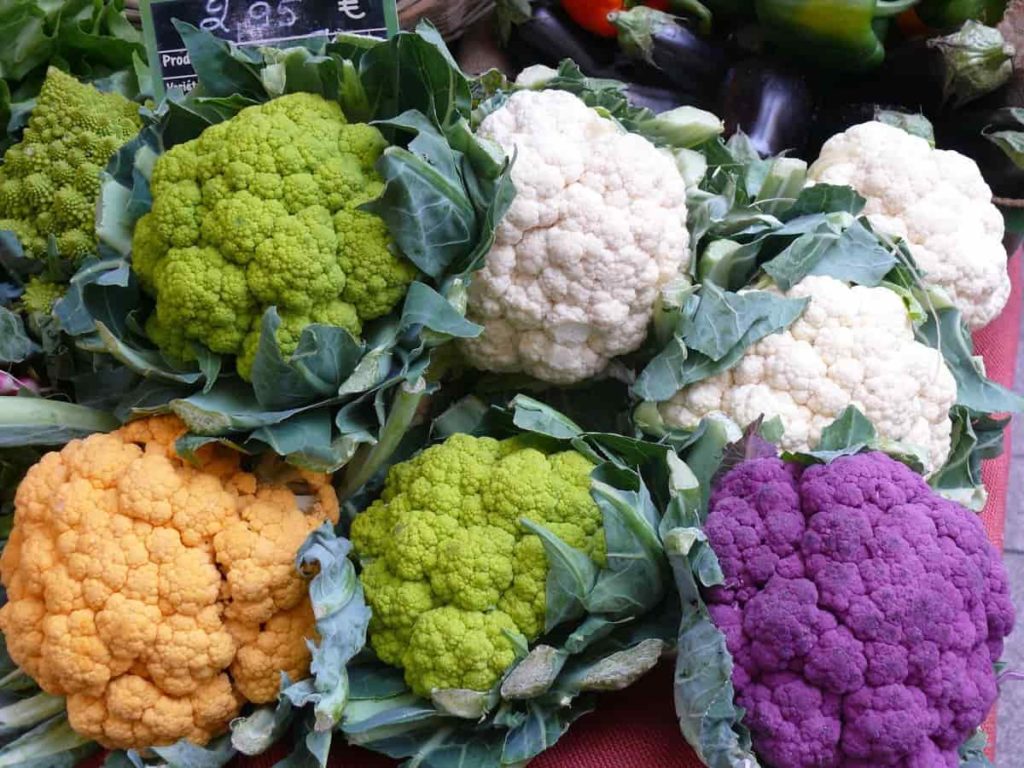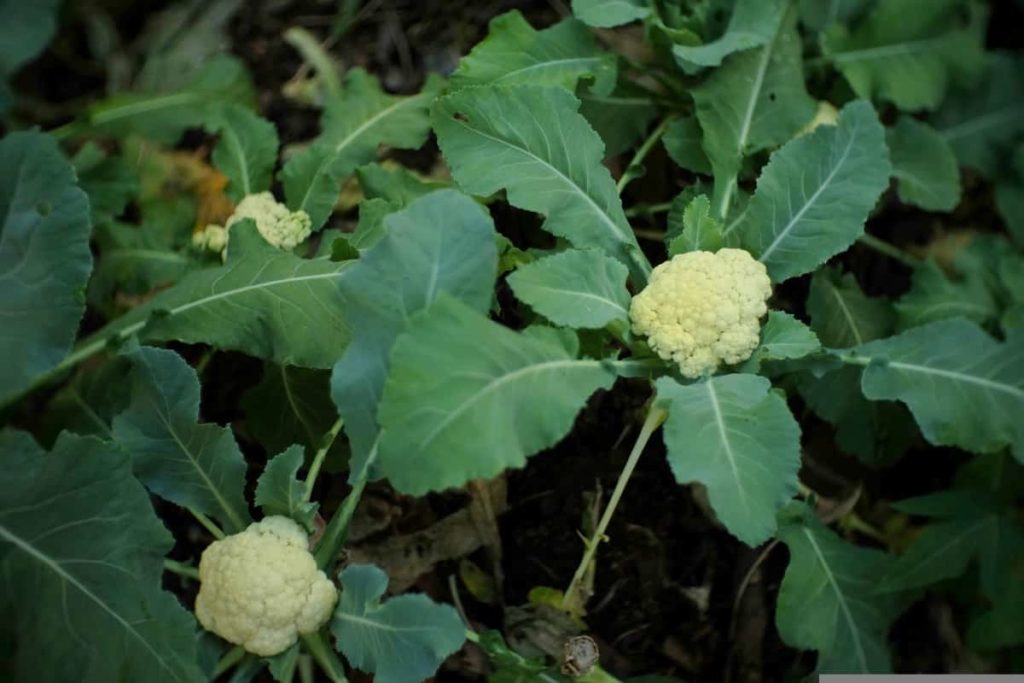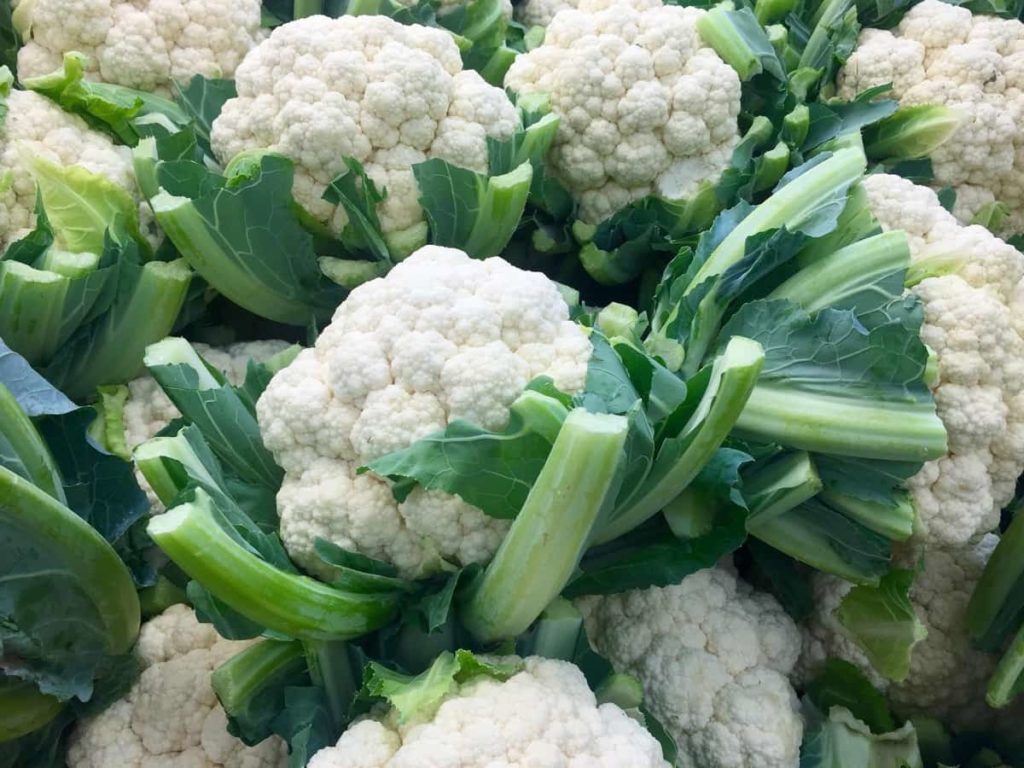Cauliflower can be a little more challenging to grow than other garden vegetables, such as Kale and Chards, as it is sensitive to temperature changes. However, it can be a very beneficial vegetable for your garden. If you start your Cauliflower with a seed, you will have many more different options. All varieties, especially white Cauliflower, must be blanched by covering the head with its leaves. These are some of the questions about Cauliflower when you grow Cauliflower in your garden.

How to grow Cauliflower from seed to harvest
How long does it take Cauliflower from seed to harvest?
When the head diameter is about 3 inches, tie the outer leaves with a twine or rubber band. It is called blanching, and it protects the head from the sun. The plant should be ready for about a week or two to harvest after blanching. Plants are usually ready for harvesting in about 80 to 100 days, depending on the variety. When the heads are compact, white, and firm, it’s time to harvest them. Ideally, the head diameter will increase from 6 to 8 inches.
Does Cauliflower regrow after cutting?
Unfortunately, you can harvest Cauliflower only once. Once the mature head is cut, new, edible heads are not formed. You can extend the harvest by planting many varieties that mature at different times. Cauliflower produces edible heads in the first year. If harvest heads, the plant ends up growing. However, in areas without freezing winter, if we do not harvest the head, the plants continue to grow, and in the second year, they will flower and set the seeds.
Cauliflower produces only one head which means you have an opportunity to correct it. The important thing is that the plant thrives in temperatures around 16-18°C, and 24°C is not more than. Cauliflower is an annual plant reproduced by seed. If it is left in the ground, it does not return year after year. Once the head is cut off, no new edible head will be ready and either removed or left in the soil to produce seeds.
In case you missed it: 19 Common Cauliflower Plant Problems: How to Fix Them, Solutions, and Treatment

What are the stages of Cauliflower growth?
Cauliflower plants have six growth stages, including seed, seedlings, leaf growth, head growth, flowering, and bolting.
- Seed – Cauliflower seeds can be planted in spring or fall in the seed tray or the garden. Cover the seeds in a thin soil layer and keep the soil moist.
- Germination -Cauliflower seeds usually take about 8 to 10 days to grow, and the first leaves appearing in the seedlings are called cotyledon or seed leaves, followed by true leaves.
- Seedling – If you have planted seeds in the pots, you can transplant them to the garden when they are about two inches long. Plant seedlings in rows with about 12 inches between each plant so that they can find a place to spread.
- Leaf growth – As Cauliflower grows, it will produce large leaves, and plants need to be watered regularly during this phase, especially if there is no heavy rainfall.
- Head growth – Once Cauliflower heads start to grow you can collect leaves to cover the head and protect them.
- Harvesting – Cauliflower is ready to harvest 80 to 100 days after planting seeds, depending on different varieties and weather conditions.
- Bolting / Flowers – The last stage of the growth of Cauliflower plants is bolting or flowering, which occurs when Cauliflower is grown when the weather is scorching or if they are left in the garden for longer.
How late can you plant Cauliflower?
You can sow Cauliflower for a long cropping season in late March, early May, and early June. You can sow Cauliflower seeds directly in the soil. For spring Cauliflower, planting is better from early April to mid-April. You should choose a variety with heat tolerance and a short growth cycle (50 to 60 days for harvesting). One of the best varieties for spring growth is Snow Crown. Start the seeds indoors or directly in the garden for the fall crop from early July to the end.
Can Cauliflower grow in winter?
There are three types of Cauliflower such as summer, autumn, and winter varieties. Cauliflower can grow as a fall crop in most areas, with seeds starting indoors in early summer. If you live in winter temperatures, you can grow selected Cauliflower varieties during winter for harvesting in spring. Cauliflower for overwintering, seeds in summer for plants whose size is enough to pass through winter, and produce heads for harvesting in the late winter or spring.
How do you know when Cauliflower is ready for harvesting?
Your Cauliflower will be ready for harvesting when the head diameter is 6 to 8 inches, about ten days after blanching. Cut the stalk below the head, leaving a truncated 1 to 2 inches. Head covered in small flowers occurring when you wait too long for the harvest. Cauliflower is focused on producing seeds. As a result, the plant becomes bitter and inedible.
In case you missed it: The Best Fertilizer for Cauliflower: Organic, Homemade, NPK, and Schedule

Why doesn’t my Cauliflower have a head?
It is undoubtedly plant-affecting stress if you have no head on your Cauliflower. Stress affecting Cauliflower growth can be caused by excessive cold soil or air temperatures, irrigation or nutritional deficiency, root-bounded plants, insects, or disease damage in spring. You should take proper care to avoid having small buttons or even heads on the Cauliflower plant. Monitor Cauliflower for any symptoms of pests or disease, provide plenty of nutrition and constant irrigation, and you should see the head of the beautiful, large white Cauliflower in no time.
This highlights places with no cold temperatures in the fall or winter. Cauliflower needs fewer temperatures to set the head, so in a hot winter climate, you often get Jurassic leaves but no head. The warm winter climate should grow Cauliflower in the fall rather than spring. The reproductive phase means head or curd growth. Any conditions during the reproductive stage, such as abnormal hot weather, drought, or low temperature, can result in small premature heads or buttons. Some consider it a Cauliflower without a head.
Does Cauliflower grow well in pots?
You can grow Cauliflower as part of your vegetable garden container ideas. You should grow Cauliflower individually in large containers. Although they have a fairly shallow root system, it is better to use at least 12 in-deep and 12 in-wide containers, as this will ensure that the soil does not dry too quickly. For spring plantation, most Cauliflower seed packages recommend starting the seeds indoors 4 to 6 weeks before your last spring frost date. You can start Cauliflower seeds indoors or plant them outdoors for the late summer, fall/winter crop.
How far apart should Cauliflower be planted?
Plant Cauliflower in rows, with each plant at a distance of 18 inches. Rows should be 30 inches apart. Improve your soil by mixing it with several inches of compost or other rich organic matter. You can place a 3-inch layer of mulch and give plants 1 to 1.5 inches of water weekly. Cauliflower is a slow-growing plant, so it is advisable to start seeds indoors. Use seed starters to grow seeds quickly.
Apply your seeds 1/2 inches deep and in rows in starters, about 4 to 6 inches apart. Be generous with your plants, as you can always thin the weak plants later. Cauliflower plants get a mature dimension of 24 to 30 inches long and 12 inches wide. Like all plants, Cauliflower seedlings start small but can grow large with maturity, often measuring 2 feet. Remember, plants need to provide equal moisture to avoid stress. If the rain falls short, apply 1 to 1.5 inches of water weekly.
How do you speed up Cauliflower growth?
Cauliflower grows best in rich, fertile, and well-drained soil. Cauliflower grows best in full sun and with a pH between 6 and 7 with rich, moist, well-drained soil. Until the soil loosens to a depth of 12 to 15 inches, next, work in a 3-inch-layer of nutritious manure or garden soil 6 inches above native soil. The plants will mature faster due to the hot soil, leaving plenty of time for growth and crop. It’s fine to sow when the temperature is quite hot at the end of summer, as the plants will start maturing as the weather cools down.
In case you missed it: Cauliflower Questions and Answers, Planting FAQs

What is a good companion plant for Cauliflower?
Beans, Celery, and Onions are all the best choices when companion planting Cauliflower. Cauliflower grows well with Spinach and Swiss Chard. These plants use different nutrients from the soil, and their roots extend to different soil layers. You should not plant Broccoli and Cauliflower together. If you do, plants fight for the same nutrients and attract many pests. Instead, place these plants at a distance of at least 3 feet.
Can tomatoes be planted next to Cauliflower?
Tomatoes like Cauliflower are also heavy feeders. Plants will compete with nutrients if planted close to each other. This can reduce the growth and production capacity of both crops.
Why do you tie up Cauliflower leaves?
You should loosely tie leaves to give curd enough room to grow. Since curd is ready at different rates, you must check your plants for several days and tie those ready. If your plantation is large, using different color bands or strings for each day will be useful for the crop, as the heads tied earlier will be ready for harvesting first. The time to tie the crop varies from four to five days during the hot spring season and 14 to 21 days on the cool autumn days.
How often should you fertilize Cauliflower?
When planting for the first time, feed Cauliflower with low nitrogen fertilizer. For your Cauliflower, re-fertilize every four weeks. A good Cauliflower crop needs ideal garden soil. Apply phosphorus (P) and potassium (K) per soil testing recommendations. Add one handful of pelleted chicken manure around the root area every four weeks as the plant grows and water well.
In case you missed it: Growing Cauliflower In Greenhouse – A Planting Guide

Cauliflower swells are heavy feeders, so you should mix compost and all-purpose organic fertilizer when planting. It’s a good idea to side-dress the plant with a little more fertilizer halfway through summer or water with diluted fish emulsion or seaweed fertilizer.
How often should I water Cauliflower?
If the Cauliflower doesn’t get one inch of rain every week in planting, soak the soil thoroughly at least once a week. An inch of water will wet sandy soil to a depth of ten inches, a heavy clay soil up to a depth of six inches. Apply 2 to 3 inches of organic mulch around plants, such as chopped leaves or straw, to maintain moisture between rain and supplementary water.
Why are my Cauliflower leaves turning brown?
Usually, browning is caused by a lack of boron, a micronutrient that is essential for healthy cell development. A deficiency can cause progress of problems triggered by saturated stem and florets, followed by discoloration, deformity, and bitter taste. Alternaria fungus Cauliflower presents as brown to black spots on the lower leaves. In its current phase, this fungal disease turns leaves yellow and then falls.
Are coffee grounds good for Cauliflower?
Cauliflower requires fertile soil, which contains plenty of nitrogen. You can do this by giving your Cauliflower bed lots of high nitrogen compost (well rotten and made from lots of coffee grounds or some fertilizer) and giving it once or twice more nitrogen organic fertilizer during its life.
Is bone meal good for Cauliflower?
You can water Cauliflower with diluted fish emulsion solution from time to time besides spraying bone meal around the plant base. The emulsion of fish delivers nitrogen and some phosphorus immediately. Bone meal is quite heavy in phosphorus but slows to enter the soil. Bone meal is perfect for growing various vegetables, including Cauliflower.
How do you protect Cauliflower from heat?
No matter when you grow them, you’ll want to protect your Cauliflower heads from the sun’s rays. Once the white head crosses 2 to 3 inches, tie the leaves of the plant together so that they shelter it. The easiest way is to tie the leaves to a rubber band, tape, or twine. This involves covering all or part of the plant to protect it from sunlight and prevent it from producing color pigments. In the case of Cauliflower, the bud of the developing flowers is protected from light so that the color is white and the flavor mild.
Why is my Cauliflower spiky?
The culprit is the rise in temperature, which topped 27°C around the time of the formation of the curd. Stress and confused plants try to revert to vegetative growth in the middle of curd formation. Cauliflower is not badly affected, except in appearance. This problem does not affect the taste of Cauliflower. The Cauliflower flavor may be somewhat bitter, but don’t assume that all Cauliflower with fuzzy heads will taste bitter.
In case you missed it: Growing Cauliflower In Greenhouse – A Planting Guide

What is the yield of Cauliflower?
The average yield of the early maturing varieties is 80 to 120 quintals per hectare. The main season varieties produce Cauliflowers of 150 to 200 quintals per hectare. While the Snowball Group and other late mature cultivars gave the highest production of 250 to 300 quintals per hectare due to the large population of plants in the area’s highly compact curd and per unit.
Conclusion
Cauliflowers are not the easiest brassicas to grow, but they are the most satisfying. The beautifully made Cauliflower with tight curd is very satisfying to see and produce. Along with white varieties, you can also get yellow and purple. Choosing different types and planting at the right time makes it possible to have Cauliflower for most of the year, mainly from March to November. Some varieties stand longer than others, so check the variety and plant. This article will tell you the answers to the questions that arise when growing Cauliflower.
- How to Grow Tomatoes Organically at Home: A Comprehensive Guide
- Organic Gardening on a Budget: Low-Cost Methods and Materials
- Gongura Seed Germination and Planting Methods
- Cabbage Seed Germination and Selection
- Broccoli Seed Germination and Selection
- Asparagus Seed Germination and Variety Selection
- Seasonal Flower Gardening: Best Practices for Spring, Summer, Fall, and Winter
- How to Grow Hibiscus from Flower
- Plantation Ideas for Home Decoration: A Beginners Guide
- Flower Garden Designs and Layouts for Beginners
- Planting and Spacing Techniques in Papaya: A Beginner’s Guide
- Growing Gold: Essential Techniques for Planting Pineapples
- How to Make Kalanchoe Plant Bushy: Home Remedies and Solutions
- 11 Reasons Why Your Gardenia is Not Blooming: Home Remedies and Solutions
- Eco Elegance: The Guide to Designing a Drought-Tolerant Landscape
- Gardening on a Slope: Strategies for Hillside Landscaping
- Nourish and Flourish: Top Organic Mulches for Thriving House Plants
- Everything You Want to Know about Indian Mogra Flower: Discover Uses and Growing
- Green Thumb Success: Expert Tips for Cultivating Greenhouse Pumpkins All Year Round
- Maximize Growth & Flavor: The Ultimate Guide to Companion Planting in Herb Gardens
- How to Control Rhododendron Problems Naturally: Home Remedies and Organic Ways to Fix Them
- Natural Magic: The Remarkable Benefits of Cinnamon for Plants
- Best Steps to Revive Dying Tulip with Natural and Organic Treatment
- 10 Reasons Why Your Angel Trumpet is Not Blooming: Remedies and Treatment
- How to Fix Periwinkle Leaf and Flower-Related Problems: Natural Remedies and Solutions
- How to Fix Zinnias Leaf and Flower Problems: Discover Natural and Home Remedies
- Organic Steps to Induce Lemon Tree Flowers: A Comprehensive Guide
- Bloom Booster: Crafting the Perfect Homemade Bougainvillea Fertilizer
- Optimizing Growth: A Guide to Applying NPK Fertilizer for Potted Plants
- 10 Best Homemade Fertilizers for Rubber Plant: DIY Recipes and Application Method
- How to Boost Female Pumpkin Flowers: Effective Steps for More Flowers and High Yields
- Transform Your Indoor Garden: Top Benefits of Pink Salt for Houseplants
- 10 Best Homemade Fertilizers for Peacock Plants (Calathea): Easy DIY Guide
- Unlock Blooms: 9 Reasons Why Your Potted Chrysanthemum is Not Blooming
- 8 Reasons Why Your Potted Hibiscus is Not Blooming: Fix it with Simple Solutions
- Unlock Blooms: 9 Key Reasons Your Potted Frangipani Won’t Flower